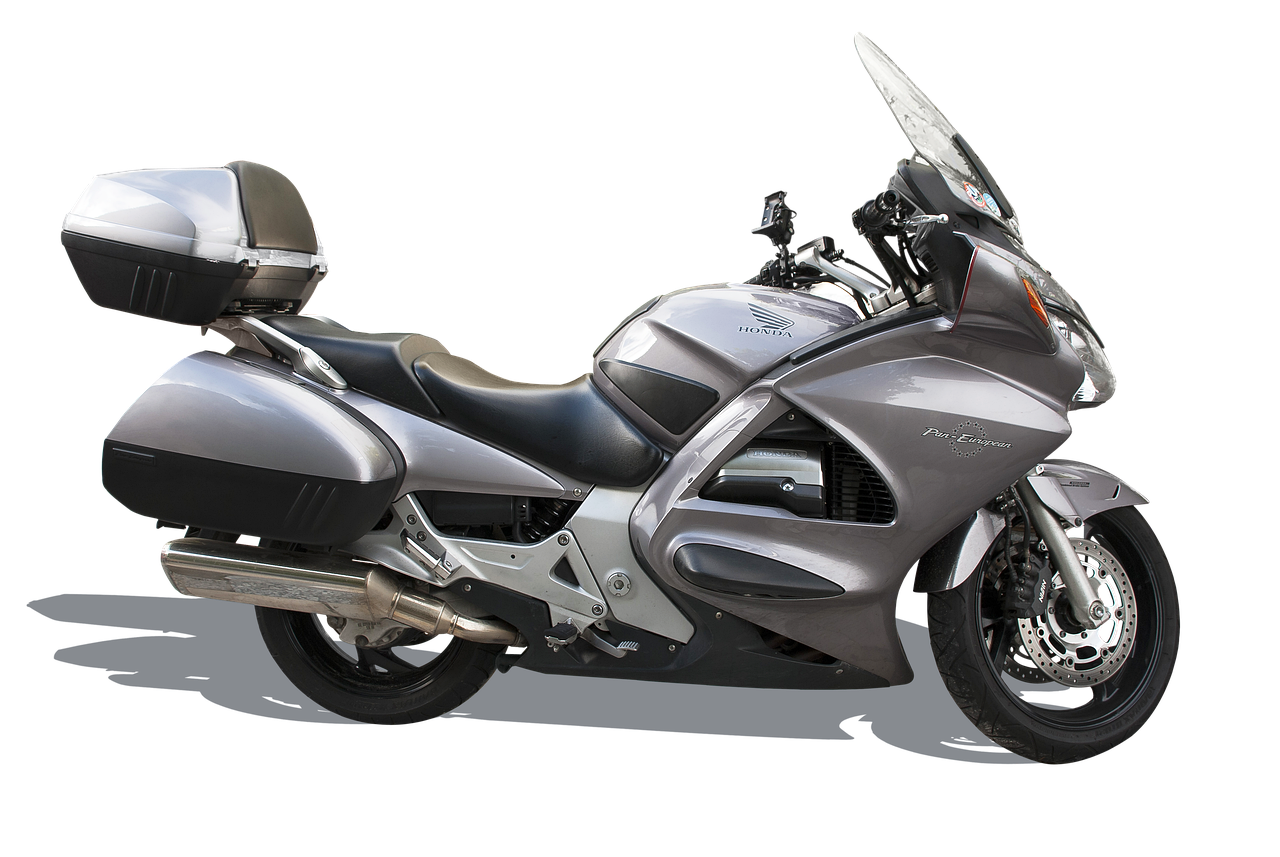This comprehensive guide provides essential information on locating, purchasing, and maintaining Honda Civic parts. Whether you’re a DIY enthusiast or a professional mechanic, this article is designed to streamline your search for quality components.
Understanding the diverse models of the Honda Civic is crucial. Each model has unique specifications and parts, so familiarizing yourself with the variations helps ensure you acquire the correct components for your vehicle’s year and trim.
When it comes to purchasing Honda Civic parts, you have several options:
- Online Retailers: Websites like Amazon and eBay boast extensive selections of parts. Knowing how to navigate these platforms can lead to the best deals.
- Local Auto Parts Stores: These stores provide immediate access to parts and the chance to consult with knowledgeable staff, which is invaluable for urgent repairs.
- Dealerships: While typically more expensive, dealerships offer OEM parts that are guaranteed to fit your specific model.
When shopping online, consider the following:
- Benefits of Online Shopping: Competitive pricing, convenience, and access to customer reviews can assist in making informed decisions.
- Potential Risks: Be cautious of incorrect parts or subpar quality. Research sellers and read reviews to mitigate these risks.
Choosing between OEM (Original Equipment Manufacturer) and aftermarket parts can significantly impact your vehicle’s performance. OEM parts ensure compatibility and reliability, while aftermarket options may be more affordable and offer enhanced performance. However, quality can vary, so thorough research is essential.
Identifying the right parts is crucial for effective repairs. Utilize your Vehicle Identification Number (VIN) to find accurate information about your Honda Civic, including model and engine type. Additionally, consulting repair manuals can provide valuable diagrams and specifications.
Proper installation of parts is essential for safety and performance. Gather the necessary tools beforehand and always follow the manufacturer’s instructions to ensure correct installation.
Regular maintenance of your Honda Civic parts can extend their lifespan and enhance performance. Conduct regular inspections to identify worn or damaged components early, and apply proper cleaning techniques to maintain functionality and appearance.

Understanding Honda Civic Models
The Honda Civic is a popular compact car known for its reliability and performance. Understanding the various models of the Honda Civic is crucial for any owner or enthusiast. Each model comes with its own unique parts and specifications, which can significantly differ from one year to another.
Familiarizing yourself with these model variations is essential. This knowledge ensures that you acquire the correct components tailored to your vehicle’s specific year and trim. For instance, the differences in engine types, transmission options, and body styles can affect the compatibility of parts.
- Model Years: Each generation of the Honda Civic has introduced new features and technologies. For example, the 2021 model may have different engine options compared to the 2010 model.
- Trim Levels: The Honda Civic is available in various trims such as LX, EX, and Touring, each offering distinct features and specifications. Understanding these trims helps in identifying the correct parts.
- Engine Variants: Different models may come with different engine configurations such as 4-cylinder, turbocharged, or hybrid options. This variation can influence the type of parts needed for repairs or upgrades.
When searching for parts, it’s advisable to use your Vehicle Identification Number (VIN). This unique identifier provides crucial information about your vehicle’s specifications, making it easier to find the right components. Additionally, consulting a repair manual specific to your model can provide valuable insights and diagrams.
In summary, understanding the nuances of Honda Civic models is vital for ensuring that you select the appropriate parts for your vehicle. By being informed about the year, trim, and specifications, you can avoid costly mistakes and enhance your vehicle’s performance.

Where to Buy Honda Civic Parts
When it comes to purchasing Honda Civic parts, there are several avenues available, each with its own set of pros and cons. Understanding these options can help you make an informed decision that suits your needs and budget.
- Online Retailers: Websites like Amazon, eBay, and specialized auto parts sites offer a vast selection of Honda Civic components. The advantage of shopping online is the ability to compare prices easily and access customer reviews, which can guide you in selecting quality parts. However, it is essential to verify the seller’s reputation to avoid potential issues with incorrect or subpar products.
- Local Auto Parts Stores: Visiting a nearby auto parts store can provide immediate access to parts, which is especially beneficial for urgent repairs. Additionally, you can consult with knowledgeable staff who can offer advice or recommendations. The downside is that local stores may have a more limited selection compared to online retailers, and prices might be higher.
- Dealerships: Authorized Honda dealerships typically offer OEM (Original Equipment Manufacturer) parts that are designed specifically for your vehicle. This ensures compatibility and reliability, and many dealerships provide warranties on their parts. However, the cost can be significantly higher than other options, making it less appealing for budget-conscious buyers.
In conclusion, the choice of where to buy Honda Civic parts largely depends on your specific needs, urgency, and budget. Each option has its advantages and disadvantages, so weighing these factors will help you find the right parts for your vehicle.
Online Retailers
When it comes to finding Honda Civic parts, online retailers have revolutionized the way enthusiasts and mechanics source components. Platforms such as Amazon and eBay provide an extensive array of parts, often at competitive prices. Navigating these sites effectively can significantly enhance your shopping experience and help you secure the best deals.
One major advantage of using online retailers is the sheer variety of parts available. Whether you need OEM components or aftermarket alternatives, these platforms typically feature an extensive selection. This variety allows you to compare prices and find the best options tailored to your specific Honda Civic model.
To maximize your search, consider the following tips:
- Use Specific Keywords: When searching for parts, include the model year and specific part names. For example, instead of searching just “brake pads,” try “2020 Honda Civic brake pads.”
- Check Seller Ratings: Always review seller ratings and feedback. This can help you avoid poor-quality parts and identify reputable sellers.
- Utilize Filters: Use the filtering options provided by these platforms to narrow down your search results based on price, condition (new or used), and shipping options.
Moreover, many online retailers offer customer reviews that can provide insights into the quality and performance of the parts. Reading these reviews can guide you in making informed purchasing decisions.
However, it’s essential to be cautious. While online shopping offers convenience, it also comes with risks such as receiving incorrect or subpar parts. Always double-check part numbers and consult your vehicle’s specifications to ensure compatibility.
In summary, online retailers like Amazon and eBay are invaluable resources for sourcing Honda Civic parts. By understanding how to navigate these platforms effectively, you can find the right components for your vehicle while taking advantage of competitive pricing and user reviews.
Benefits of Online Shopping
In today’s digital age, online shopping has revolutionized the way consumers purchase products, especially when it comes to automotive parts like those for the Honda Civic. The advantages of this shopping method are numerous and can significantly enhance your purchasing experience.
- Competitive Pricing: One of the most appealing aspects of online shopping is the ability to compare prices across multiple platforms easily. Retailers often offer discounts and promotions that can lead to significant savings. This competition among sellers ensures that you are getting the best possible price for the parts you need.
- Convenience: Shopping for Honda Civic parts online allows you to browse and purchase at any time that suits you. Whether it’s during a lunch break or late at night, the convenience of online shopping means you can find and order parts without the limitations of store hours.
- Access to Customer Reviews: Online platforms provide access to a wealth of customer reviews and ratings. These insights can be invaluable when making purchasing decisions, as they allow you to gauge the quality and reliability of specific parts based on the experiences of other buyers.
- Extensive Selection: Online retailers often have a broader selection of parts than local stores, including rare or hard-to-find components. This extensive inventory increases your chances of finding exactly what you need for your Honda Civic.
- Detailed Product Information: Online listings typically include detailed descriptions, specifications, and images of parts. This information can help you make informed decisions and ensure compatibility with your vehicle.
While the benefits of online shopping are substantial, it is essential to remain cautious. Always ensure you are purchasing from reputable sellers and double-check return policies to safeguard against potential issues. By leveraging the advantages of online shopping, you can streamline your process of finding the right Honda Civic parts effectively.
Potential Risks
When it comes to online shopping for Honda Civic parts, the convenience and variety can be incredibly appealing. However, it is essential to be aware of the involved in this process. While you may find the part you need at a great price, there are several factors that can lead to dissatisfaction and complications.
- Receiving Incorrect Parts: One of the most common issues faced by online shoppers is receiving components that do not fit their vehicle. This can result from miscommunication about the part number or specifications, leading to frustration and additional costs for returns or exchanges.
- Quality Concerns: Not all parts sold online are of the same quality. Some sellers may offer subpar products that can affect your vehicle’s performance or safety. It’s crucial to verify the reputation of the seller and the quality of the parts they offer.
- Lack of Customer Support: When purchasing from online retailers, you may not have immediate access to customer service. This can be problematic if you encounter issues with your order or need assistance with installation.
- Delayed Shipping: Unlike local auto parts stores, online purchases may involve shipping delays, which can be inconvenient if you need a part urgently for repairs.
- Returns and Refunds: The process for returning parts can be cumbersome. Some sellers may have strict return policies or charge restocking fees, making it essential to read the terms and conditions carefully before purchasing.
To mitigate these risks, it is crucial to conduct thorough research before making a purchase. Look for customer reviews and ratings, and consider purchasing from well-known retailers with a proven track record. By taking these precautions, you can enhance your online shopping experience and ensure that you receive the right parts for your Honda Civic.
Local Auto Parts Stores
When it comes to finding the right parts for your Honda Civic, offer a unique advantage that online shopping cannot replicate. These stores provide immediate access to a variety of components, allowing you to obtain the necessary parts without the wait associated with online orders. This is particularly beneficial for those facing urgent repairs where time is of the essence.
One of the key benefits of visiting a local auto parts store is the opportunity to consult with knowledgeable staff. These professionals can offer valuable insights and recommendations based on their experience. They can help you identify the specific parts you need, ensuring that you get the correct components for your Honda Civic’s model and year. This personalized service can save you from the frustration of ordering the wrong parts, which can lead to delays and additional costs.
Furthermore, local stores often have hands-on displays and samples that allow you to inspect the quality of the parts before making a purchase. This tactile experience can be crucial for discerning the right fit and quality, especially when dealing with critical components such as brakes or suspension parts.
Many local auto parts stores also carry a selection of both OEM (Original Equipment Manufacturer) and aftermarket parts. This variety enables you to compare options and make an informed decision based on your budget and performance needs. Additionally, local stores frequently run promotions or discounts, which can lead to significant savings on your purchases.
In conclusion, while online shopping offers convenience, the benefits of visiting local auto parts stores cannot be overlooked. From immediate access to parts and expert advice to the ability to physically inspect items, these stores play a vital role in ensuring your Honda Civic remains in optimal condition.

OEM vs. Aftermarket Parts
When it comes to maintaining and upgrading your Honda Civic, one of the most critical decisions you’ll face is whether to choose OEM (Original Equipment Manufacturer) parts or aftermarket parts. This choice can have a profound impact on your vehicle’s performance, reliability, and overall value. Understanding the nuances of each option is essential for making an informed decision that suits your needs.
OEM Parts: Quality and Compatibility
OEM parts are made by the manufacturer of your vehicle and are designed to meet the original specifications. This means that they are perfectly compatible with your Honda Civic, ensuring optimal performance and longevity. One of the significant advantages of OEM parts is the warranty that often accompanies them, providing peace of mind in case of defects or issues. Additionally, using OEM parts helps maintain your vehicle’s resale value, as potential buyers often prefer vehicles with original components.
Aftermarket Parts: Cost-Effective Alternatives
On the other hand, aftermarket parts are produced by third-party companies and can vary widely in terms of quality and price. While they are typically more affordable than OEM parts, the trade-off can sometimes be a lack of compatibility or reliability. However, many reputable aftermarket brands offer high-quality components that can even improve performance. It’s essential to conduct thorough research and read reviews to find trustworthy aftermarket options.
Considerations for Your Decision
- Budget: If cost is a significant concern, aftermarket parts may be the better choice.
- Performance Needs: If you’re looking for enhanced performance, some aftermarket parts may offer features that OEM parts do not.
- Warranty and Support: Consider the warranty options and customer support available for both types of parts.
Ultimately, the decision between OEM and aftermarket parts comes down to your specific needs and preferences. By weighing the pros and cons of each option, you can make a choice that will keep your Honda Civic running smoothly and efficiently.
Advantages of OEM Parts
When it comes to maintaining your vehicle, choosing the right parts is crucial for ensuring optimal performance and longevity. One of the best options available is OEM parts, which stands for Original Equipment Manufacturer parts. These components are specifically designed for your vehicle, making them a reliable choice for repairs and replacements.
Compatibility is one of the primary advantages of OEM parts. Since they are manufactured by the same company that produced the original parts for your vehicle, you can be confident that they will fit perfectly and function as intended. This is particularly important for complex systems like engines and transmissions, where even minor discrepancies can lead to significant issues.
Another key benefit is reliability. OEM parts are subjected to rigorous testing and quality control standards, ensuring that they meet the manufacturer’s specifications. This level of assurance means that you are less likely to encounter problems related to part failure or incompatibility, ultimately leading to a smoother driving experience.
Additionally, many OEM parts come with warranties, providing peace of mind for vehicle owners. This warranty coverage can vary by manufacturer but typically includes guarantees against defects in materials and workmanship. Having this protection means that if an OEM part fails prematurely, you can often have it replaced at no additional cost.
Moreover, using OEM parts can help maintain your vehicle’s resale value. Prospective buyers often prefer vehicles that have been maintained with original parts, as this indicates that the vehicle has been cared for properly. This can be a significant factor in your vehicle’s overall marketability.
In summary, choosing OEM parts for your vehicle not only ensures compatibility and reliability but also enhances your peace of mind through warranty coverage. While they may come at a higher price point compared to aftermarket options, the long-term benefits they provide make them a worthwhile investment for any vehicle owner.
Benefits of Aftermarket Parts
When it comes to enhancing your Honda Civic, aftermarket parts have gained popularity among car enthusiasts and everyday drivers alike. These parts often provide a more affordable alternative to OEM components while potentially offering improved performance and customization options.
- Cost-Effectiveness: One of the most significant advantages of aftermarket parts is their lower price point. Many consumers find that they can save a substantial amount of money by choosing these alternatives, allowing for more flexibility in their budgets.
- Performance Enhancement: Aftermarket parts can sometimes outperform OEM components. For example, performance exhaust systems or upgraded suspension kits can enhance your vehicle’s handling and power, offering a more dynamic driving experience.
- Customization Options: Aftermarket manufacturers often provide a wider variety of styles and features. Whether you’re looking for a sporty look or specific performance upgrades, you’re likely to find a part that meets your unique needs and preferences.
- Availability: Aftermarket parts are widely available through various retailers, both online and in-store. This accessibility allows you to easily compare prices and options to find the best fit for your Civic.
However, it’s essential to keep in mind that the quality of aftermarket parts can vary significantly. Not all aftermarket products are created equal, and some may not meet the same standards as OEM parts. Therefore, conducting thorough research on brands, reading customer reviews, and consulting with knowledgeable professionals can help you ensure that you are investing in reliable components.
In summary, while aftermarket parts can offer numerous benefits such as affordability, enhanced performance, and customization, it is crucial to prioritize quality and reliability. By doing so, you can maximize the advantages of these parts for your Honda Civic.

Identifying the Right Parts for Your Civic
Identifying the right parts for your Honda Civic is a fundamental step in ensuring effective repairs and maintaining optimal performance. With the multitude of components available, correctly identifying the parts you need can save both time and money. Understanding your vehicle’s specifications and utilizing part numbers can significantly streamline this process.
One of the first steps in identifying the correct parts is to familiarize yourself with your vehicle’s specifications. Each Honda Civic model has unique features and parts, which means that a part suitable for one model may not fit another. Knowing your vehicle’s year, make, and model is essential. This information can often be found in your owner’s manual or on the vehicle itself, usually on a sticker located in the driver’s side door jamb.
Utilizing the Vehicle Identification Number (VIN) is another effective method to ensure you are sourcing the correct parts. The VIN contains vital information about your car, including its engine type and production year. By entering your VIN into various online parts databases, you can quickly access a list of compatible components.
Additionally, consulting repair manuals can provide invaluable insights. These manuals typically include detailed diagrams, specifications, and part numbers, which can assist in identifying the necessary components for repairs. Many manufacturers and third-party publishers offer repair manuals specifically for Honda Civics, making this a reliable resource.
Moreover, leveraging online forums and communities dedicated to Honda Civic enthusiasts can also aid in your search. These platforms often feature discussions about parts compatibility and recommendations from experienced owners and mechanics.
In summary, effectively identifying the right parts for your Honda Civic involves understanding your vehicle’s specifications, utilizing your VIN, consulting repair manuals, and engaging with automotive communities. By taking these steps, you can ensure that your repairs are performed with the correct components, leading to a smoother and more reliable driving experience.
Using VIN for Accurate Identification
When it comes to maintaining or repairing your Honda Civic, understanding the importance of your Vehicle Identification Number (VIN) is crucial. The VIN is a unique 17-character code that serves as a fingerprint for your vehicle, providing invaluable information that can simplify the process of finding the right parts.
The VIN contains specific details about your Honda Civic, including:
- Model: Identifies the specific model of your Civic, which is essential for ensuring compatibility with replacement parts.
- Engine Type: Indicates the engine variant, which is vital when sourcing engine-related components.
- Production Year: Helps in determining the correct parts based on the year your vehicle was manufactured.
By decoding the VIN, you can quickly ascertain the exact specifications of your vehicle. This information is particularly useful when purchasing parts from various sources, be it online retailers or local auto parts stores. It minimizes the risk of ordering the wrong items, which can lead to delays and added costs.
Many online platforms and parts suppliers allow you to enter your VIN directly to filter compatible components. This feature not only saves time but also enhances the accuracy of your parts search. Additionally, understanding your VIN can help you when consulting with mechanics or parts specialists, as it provides a common reference point.
In conclusion, leveraging your Honda Civic’s VIN is a smart strategy for anyone looking to maintain their vehicle. By ensuring that you have the correct model, engine type, and production year, you can confidently source the right parts, ultimately enhancing your vehicle’s performance and longevity.
Consulting Repair Manuals
is an essential step for both novice and experienced Honda Civic owners. These manuals serve as a comprehensive resource, providing in-depth information that can significantly enhance your understanding of your vehicle’s components and systems.
One of the primary benefits of using a repair manual is the detailed diagrams it offers. These illustrations visually represent various parts of the Honda Civic, making it easier to locate and identify components. Each diagram is accompanied by specific specifications, ensuring that you know exactly what you need for repairs or replacements.
Additionally, repair manuals typically include step-by-step instructions for various maintenance tasks and repairs. This guidance is invaluable for DIY enthusiasts who prefer to tackle repairs themselves. By following these instructions, you can ensure that each job is completed correctly and safely, which is crucial for maintaining your vehicle’s performance and longevity.
Moreover, understanding the specific components of your Honda Civic can save you time and money. With a repair manual, you can easily identify which parts may need replacement, allowing you to order the correct items without unnecessary delays. This is particularly important when dealing with issues that require immediate attention, as incorrect parts can lead to further complications.
For those who may be unsure about how to interpret the information in a repair manual, there are also numerous online forums and communities where experienced mechanics and Honda enthusiasts share their insights. Engaging with these communities can provide additional support and clarification, helping you to maximize the utility of your repair manual.
In summary, is a fundamental practice for anyone looking to maintain or repair their Honda Civic effectively. By utilizing these manuals, you not only gain a better understanding of your vehicle but also empower yourself to make informed decisions regarding repairs and part replacements.

Tips for Installing Honda Civic Parts
Proper installation of parts is crucial for the performance and safety of your Honda Civic. Whether you are a novice or an experienced mechanic, adhering to best practices can significantly enhance the installation process. Here are some essential tips to ensure a successful installation.
- Gather the Right Tools: Before beginning any installation, make sure you have all necessary tools at hand. This preparation not only saves time but also prevents unnecessary frustration during the repair process. Common tools include wrenches, screwdrivers, and torque wrenches.
- Follow Manufacturer Instructions: Always refer to the installation instructions provided with your parts. These guidelines are designed to ensure that components are installed correctly and function as intended. Skipping steps or improvising can lead to improper installation and potential damage.
- Check Compatibility: Verify that the parts you are installing are compatible with your specific Honda Civic model. Using parts that do not match your vehicle can lead to performance issues and safety hazards.
- Work in a Clean Environment: A clean workspace minimizes the risk of dirt and debris contaminating parts during installation. Ensure that your work area is organized and free from unnecessary clutter.
- Take Your Time: Rushing through the installation process can lead to mistakes. Take your time to carefully follow each step, ensuring that everything is done correctly. Patience is key to achieving a successful outcome.
- Test the Installation: After completing the installation, conduct a thorough inspection and test the new parts. This step ensures that everything is functioning correctly and that there are no leaks or unusual noises.
- Seek Help if Needed: If you encounter difficulties during installation, do not hesitate to consult a professional mechanic or refer to online forums for assistance. Getting help can prevent further complications.
By following these tips, you can enhance not only the performance of your Honda Civic but also its safety on the road. Remember, proper installation is a critical factor in maintaining your vehicle’s reliability and longevity.
Gathering the Right Tools
When it comes to installing parts on your Honda Civic, is a crucial first step. Having the appropriate tools not only facilitates a smoother installation process but also enhances the overall success of your repair efforts. Below are some essential tools and tips to consider before you dive into your project.
- Basic Hand Tools: A set of wrenches, screwdrivers, and pliers is fundamental. These tools will help you tackle most standard installations and repairs.
- Specialized Tools: Depending on the part you are installing, you may need specialized tools such as a torque wrench or a socket set. Research the specific requirements for your Honda Civic model to ensure you have everything you need.
- Safety Gear: Don’t forget to equip yourself with safety glasses and gloves. Protecting yourself while working on your vehicle is paramount.
- Work Surface: A clean, organized workspace can significantly improve your efficiency. Consider using a workbench or a garage floor mat to keep your tools and parts in order.
Before starting any installation, it’s vital to double-check that you have all the necessary tools on hand. This preparation can save you valuable time and prevent frustration during the repair process. If you find yourself missing a tool, it may lead to delays or even the inability to complete the installation.
Additionally, familiarizing yourself with the installation process through repair manuals or online tutorials can be beneficial. Understanding the steps involved will help you anticipate which tools you will need at each stage of the installation.
By ensuring that you are well-prepared with the right tools and knowledge, you can approach your Honda Civic repairs with confidence, making the process more efficient and enjoyable.
Following Manufacturer Instructions
When it comes to installing parts for your Honda Civic, following the manufacturer instructions is not just a suggestion; it is a vital step in ensuring that your vehicle operates smoothly and safely. Each component is designed with specific guidelines that optimize its performance and longevity. Neglecting these instructions can lead to improper installations, which may result in malfunctions or even damage to your vehicle.
Adhering to the provided instructions helps you understand the correct installation procedures, including torque specifications, necessary tools, and any special techniques required. This attention to detail is especially important for complex components, such as engine parts or electrical systems, where even minor errors can lead to significant issues.
Additionally, following the instructions can help you avoid potential warranty voidance. Many manufacturers stipulate that improper installation may void warranties on parts. By adhering to the guidelines, you ensure that your warranty remains intact, providing you with the peace of mind that comes with knowing you are covered in case of defects or failures.
To further enhance your installation experience, consider the following tips:
- Read the Instructions Thoroughly: Before starting, take the time to read through all provided materials. This will give you a comprehensive understanding of what to expect.
- Use the Right Tools: Ensure you have all the necessary tools at hand. Using the correct tools can make the installation process smoother and more efficient.
- Take Your Time: Rushing through an installation can lead to mistakes. Take your time to ensure everything is done correctly.
- Seek Help if Needed: If you’re unsure about any step, don’t hesitate to consult a professional or refer to online forums for guidance.
By prioritizing the installation instructions, you not only enhance the performance of your Honda Civic but also contribute to its overall safety and reliability. Remember, a well-installed part is crucial for the longevity of your vehicle.

Maintaining Your Honda Civic Parts
is crucial for ensuring the longevity and performance of your vehicle. Regular maintenance not only extends the lifespan of various components but also enhances overall driving experience. Understanding the recommended maintenance schedules and practices can significantly contribute to keeping your Honda Civic in optimal condition.
Regular maintenance helps in identifying potential issues before they escalate into costly repairs. By adhering to a maintenance schedule, you can:
- Improve Performance: Well-maintained parts work more efficiently, resulting in better fuel economy and smoother operation.
- Enhance Safety: Regular checks can prevent failures that might lead to accidents, ensuring that your vehicle remains safe to drive.
- Increase Resale Value: A well-maintained vehicle is more attractive to potential buyers, potentially increasing its resale value.
Consult your owner’s manual for the specific maintenance schedule tailored for your Honda Civic model. Typically, this includes:
- Oil changes every 5,000 to 7,500 miles.
- Air filter replacements every 15,000 to 30,000 miles.
- Brake inspections at least once a year.
To effectively maintain your Honda Civic parts, consider the following best practices:
- Regular Inspections: Check vital components such as brakes, tires, and fluids regularly to catch any signs of wear early.
- Use Quality Products: Always opt for high-quality oils, filters, and parts to ensure compatibility and reliability.
- Document Maintenance: Keep a log of all maintenance activities, which can help track service history and inform future repairs.
Proper cleaning and care of your Honda Civic parts can significantly improve their functionality and appearance. Here are some tips:
- Use appropriate cleaning agents designed for automotive use.
- Avoid using abrasive materials that can scratch surfaces.
- Regularly wash and wax the exterior to protect against environmental damage.
Regular Inspections
Regular inspections of your vehicle are a vital part of responsible car ownership. By systematically checking your Honda Civic, you can spot worn or damaged parts early, which is crucial for maintaining the vehicle’s performance and safety. This proactive approach not only enhances your driving experience but can also prevent costly repairs down the line.
Conducting these inspections should be a routine part of your vehicle maintenance schedule. Here are some key aspects to focus on during your regular checks:
- Tire Condition: Inspect the tread depth and look for any signs of uneven wear. Properly inflated and well-maintained tires are essential for safety and fuel efficiency.
- Fluid Levels: Regularly check engine oil, coolant, brake fluid, and transmission fluid levels. Low or dirty fluids can lead to significant mechanical issues.
- Brakes: Listen for unusual noises when braking and check the brake pads for wear. Effective brakes are critical for your safety.
- Battery Health: Examine the battery terminals for corrosion and ensure that the battery is securely mounted. A well-functioning battery is essential for starting your vehicle.
- Lights and Signals: Test all headlights, taillights, and turn signals to ensure they are functioning correctly. Visibility is key for safe driving, especially at night.
By prioritizing these inspections, you not only ensure your vehicle operates smoothly but also extend the lifespan of its components. If you notice any issues during your inspections, addressing them promptly can save you from more extensive repairs and maintain the overall value of your Honda Civic.
In summary, regular vehicle inspections are an investment in your car’s longevity and your safety on the road. By being proactive and attentive to your Honda Civic’s needs, you can enjoy a reliable and efficient driving experience.
Cleaning and Care Tips
Maintaining your Honda Civic’s performance and appearance is crucial, and one of the most important aspects of this maintenance is proper cleaning and care of its parts. Understanding the right products and techniques for cleaning can significantly enhance the longevity of your vehicle’s components.
Why Cleaning is Essential
Regular cleaning of parts not only helps in maintaining their functionality but also preserves their aesthetic appeal. Dirt, grime, and debris can accumulate over time, leading to wear and tear. By implementing a consistent cleaning routine, you can prevent potential issues that might arise from neglect.
Choosing the Right Cleaning Products
- Non-Abrasive Cleaners: Always opt for non-abrasive cleaners that won’t scratch or damage surfaces.
- Specialized Products: Use cleaners specifically designed for automotive parts, such as brake cleaner for brake components or engine degreasers for engine parts.
- Eco-Friendly Options: Consider environmentally friendly cleaners that are effective yet safe for your vehicle and the planet.
Effective Cleaning Techniques
- Gentle Scrubbing: Use soft brushes or cloths to gently scrub surfaces. Avoid using steel wool or harsh scrubbers that can cause scratches.
- Rinsing Thoroughly: Always rinse parts thoroughly after cleaning to remove any residue from cleaning products.
- Drying Properly: Ensure parts are dried completely to prevent rust or corrosion, especially for metal components.
Regular Maintenance Schedule
Incorporating cleaning into your regular maintenance schedule can help you stay on top of your vehicle’s needs. Aim to clean parts at least every few months, or more frequently if you drive in harsh conditions.
By understanding the importance of proper cleaning and care, you can ensure that your Honda Civic remains in excellent condition. Implementing the right products and techniques will not only enhance functionality but also keep your vehicle looking its best.
Frequently Asked Questions
- What are OEM parts and how do they differ from aftermarket parts?
OEM parts are made by the original manufacturer of your vehicle, ensuring perfect fit and quality. On the other hand, aftermarket parts are produced by third-party companies, which can vary in quality and price. Choosing between them depends on your budget and performance needs.
- How can I find the right parts for my Honda Civic?
The best way to find the right parts is by using your Vehicle Identification Number (VIN), which provides specific details about your model. Additionally, consulting repair manuals can guide you in identifying the necessary components.
- Is it safe to buy Honda Civic parts online?
Buying parts online can be safe if you do your homework. Check seller reviews, compare prices, and ensure you’re purchasing from reputable sites to minimize risks like receiving incorrect or low-quality parts.
- What tools do I need for installing Honda Civic parts?
Common tools include wrenches, screwdrivers, pliers, and a jack. Having the right tools ready before you start can make the installation process smoother and more efficient.
- How often should I inspect my Honda Civic parts?
Regular inspections are crucial! Aim to check your parts every few months or before long trips. This proactive approach can help catch issues early and save you from costly repairs down the road.



